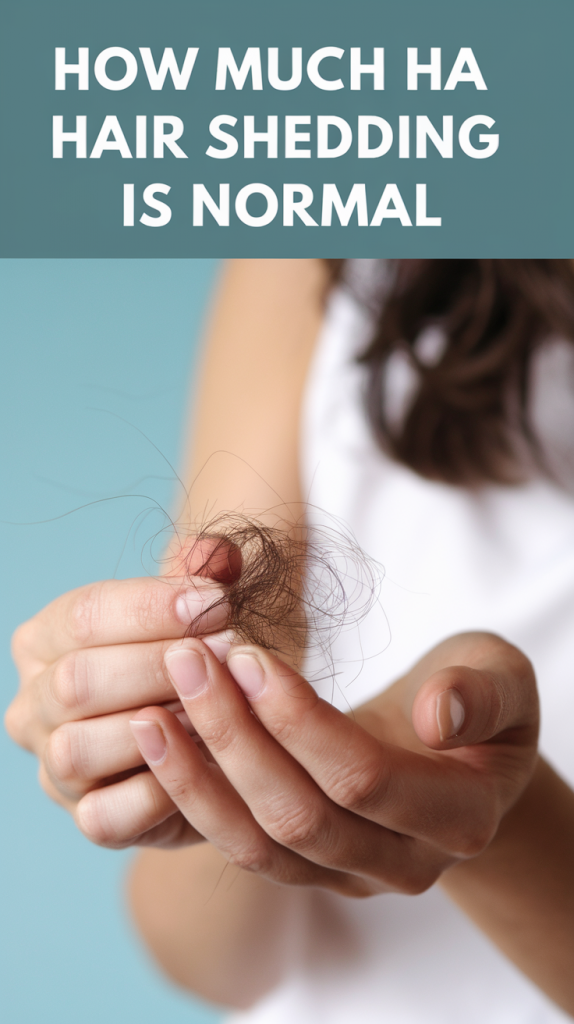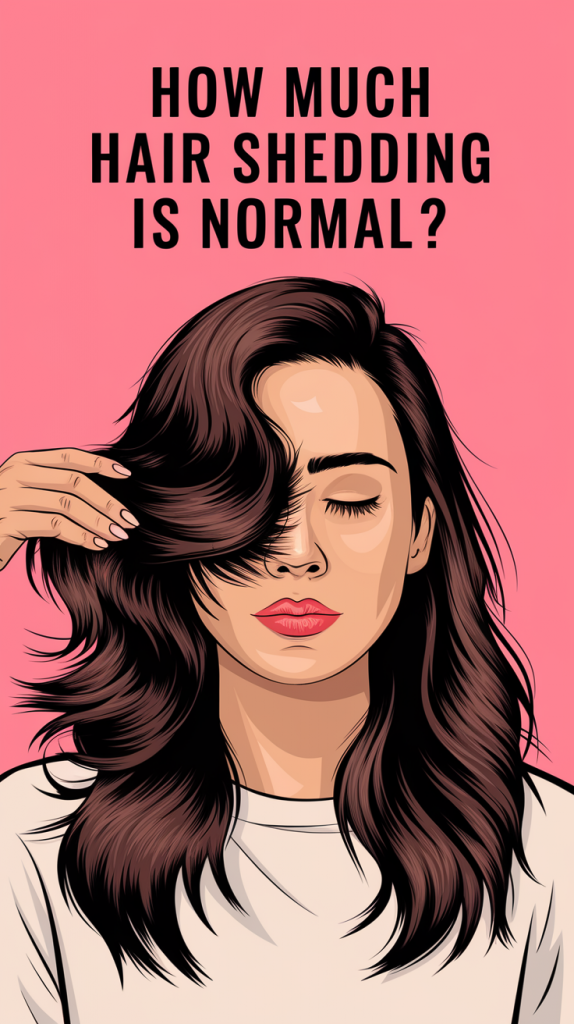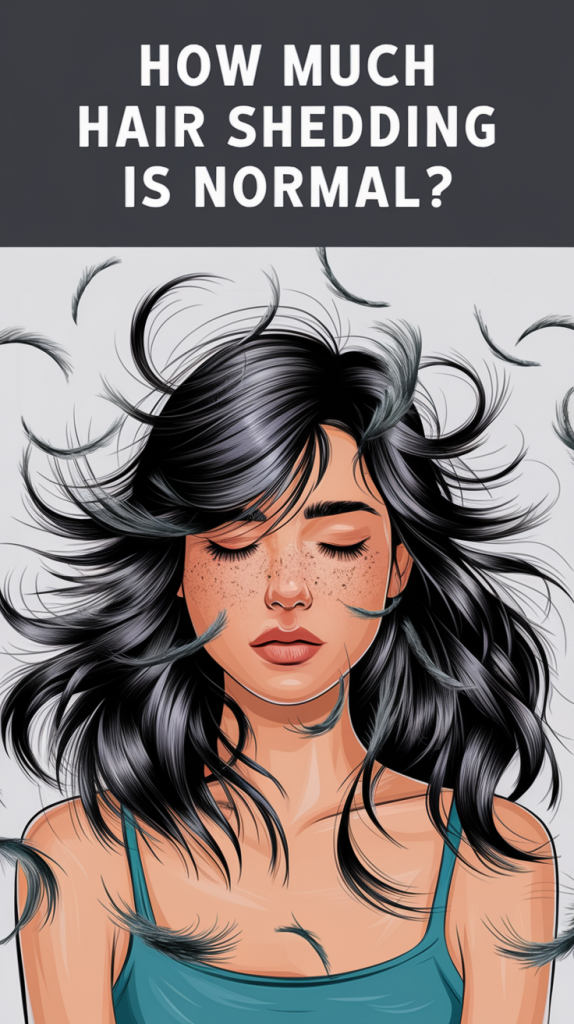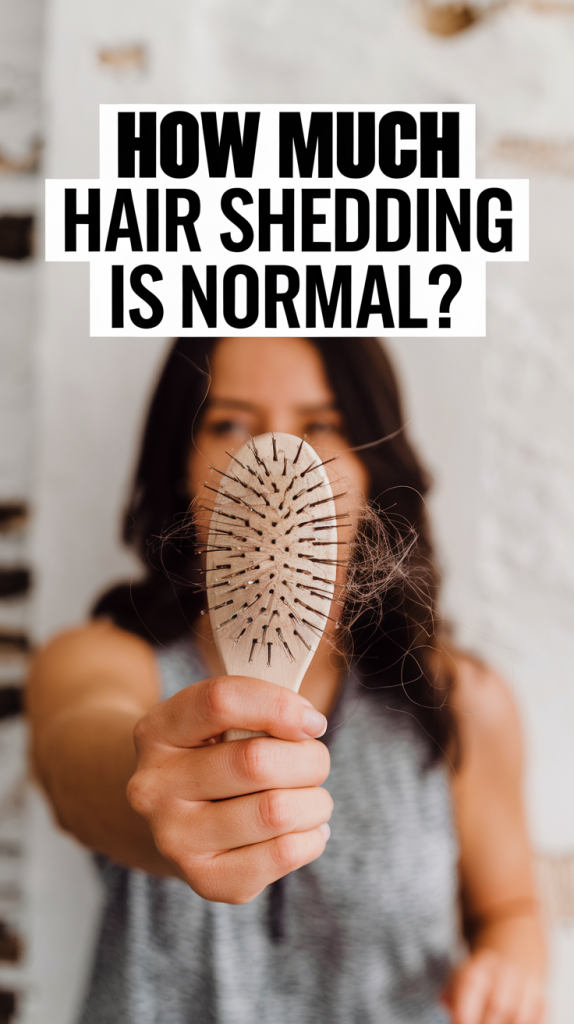How Much Hair Shedding Is Normal?
Hair shedding is a normal process that’s part of the hair growth cycle. On average, people shed 50 to 100 hairs per day, but this number can vary based on multiple factors. Understanding this natural phenomenon can help you distinguish normal shedding from potential hair loss issues.

Hair Growth Cycle Explained
The hair growth cycle consists of four phases, each contributing to the health and renewal of your hair:
| Phase | Description | Duration |
|---|---|---|
| Anagen | Active growth phase where hair follicles produce new strands. | 2–6 years |
| Catagen | Transitional phase where hair follicles shrink and growth slows. | 2–3 weeks |
| Telogen | Resting phase; hair stops growing and prepares to shed. | 3–4 months |
| Exogen | Shedding phase; hair falls out, making way for new growth. | Part of Telogen phase |
At any time, around 85–90% of your hair is in the anagen phase, ensuring continuous growth and regeneration.
How Much Hair Shedding Is Normal?
Shedding between 50 and 100 hairs daily is generally considered normal. This occurs during the exogen phase when hair is naturally released from the follicle. However, the perception of shedding can vary depending on:

Washing and Styling Habits
- Washing your hair loosens strands already in the shedding phase, making it seem like you’re losing more hair.
- Tight hairstyles or excessive heat styling can increase breakage, which might be mistaken for shedding.
Seasonal Variations
It’s common to experience increased shedding during certain seasons, such as autumn, due to natural changes in hair growth cycles.
Factors Influencing Hair Shedding
Various factors can impact the amount of hair you shed daily:
| Factor | Impact on Hair Shedding |
|---|---|
| Dietary Deficiencies | Lack of nutrients like iron, zinc, or vitamin D weakens hair follicles. |
| Hormonal Changes | Pregnancy, menopause, or hormonal conditions like PCOS can disrupt the hair cycle. |
| Stress | Chronic stress can trigger telogen effluvium, leading to excessive shedding. |
| Age | Hair naturally thins with age, producing finer and less dense strands. |
How to Differentiate Shedding from Hair Loss

While shedding is a natural process, hair loss may indicate underlying issues. Here’s how to tell the difference:
| Normal Shedding | Hair Loss (Alopecia) |
|---|---|
| Averages 50–100 hairs daily | Persistent loss beyond 100 hairs daily |
| No visible changes in hair volume | Noticeable thinning, bald spots, or receding hairline |
| Temporary and part of a cycle | Often linked to genetic, medical, or environmental factors |
When to Be Concerned
If you notice the following signs, it’s time to consult a healthcare professional:
- Shedding clumps of hair or more than 100 strands daily.
- Bald patches or significant thinning.
- Sudden changes in hair texture, such as becoming brittle.
Tips for Managing Hair Shedding

Balanced Diet
- Include iron-rich foods like spinach and lentils.
- Consume protein from sources like eggs and fish, as hair is primarily made of keratin.
Gentle Hair Care Practices
- Use sulfate-free shampoos to reduce scalp irritation.
- Avoid tight hairstyles that put stress on the roots.
- Minimize heat styling and chemical treatments.
Stress Management
Chronic stress can exacerbate shedding. Incorporate practices like yoga, meditation, or regular exercise to improve overall well-being.
Common Myths About Hair Shedding
- Myth: Washing your hair daily causes shedding.
- Truth: Washing only removes hairs that were already in the shedding phase.
- Myth: Cutting hair reduces shedding.
- Truth: Shedding occurs from the follicle, not the hair shaft.
FAQs
1. How can I track my hair shedding?
Keep a journal and note excessive shedding. Use photos to monitor scalp changes over time.
2. Can stress-related shedding stop on its own?
Yes, stress-related shedding typically resolves within 6–9 months after the stressor is removed.
3. Does shedding increase with age?
Yes, hair thins as we age, producing finer and less dense strands.
4. Can supplements reduce hair shedding?
If shedding is linked to nutrient deficiencies, supplements like biotin and zinc can help. Consult a healthcare provider first.
5. Is it normal to shed more in autumn?
Yes, seasonal shedding, especially in autumn, is a common phenomenon tied to the hair growth cycle.
Conclusion
Hair shedding is a natural process, with most people shedding 50–100 hairs daily. Factors like diet, age, and stress can influence shedding patterns, but understanding these factors helps you take proactive steps toward healthier hair. If you notice unusual shedding, don’t hesitate to consult a professional. Remember, healthy habits and timely care are key to maintaining luscious locks!

